Battery testing & evaluation
By Frank Massey
Batteries are one of the very first electrical components fitted to vehicles, because of this there is an element of complacency with testing and evaluation. My college days remind me that it’s a chemical cocktail storage device, converting chemical energy into electrical energy. Today however it’s a fully integrated component within a network.
Not only has its importance elevated, its construction has also changed and therefore how we test and service batteries has become technically more challenging. Over the years several options were available.
- Specific gravity, simple & accurate. No longer possible with sealed battery cells.
- High rate discharge, simple but not specific to a cross section of battery capacities.
- Timed load discharge, not simple, accurate but time consuming.
- Battery capacitance, accurate, quick, linear results compared with timed discharge.
- Refractometer.
Let’s begin with a simple overview of the different battery types.
Type 1
The traction battery, designed to supply a high current over a short time, its cell construction is thinner enabling rapid discharge rates. However, it must be maintained above 12.6v if capacity is to be maintained. A fully charged cell will have @ 2.1v and a SG 1280.
Type 2
The leisure battery, designed for environments where a steady current over extended time is required, i.e. caravans, boats. The cells are thicker, allowing a steady discharge down to 10% without cell capacity reduction. Often with open cell design allowing SG testing.
It has been necessary due to an increased demand to move from a simple flooded cell design, to enhanced flooded battery EFB. These were introduced with stop start technology, where high demand, constant use and quick recovery was required. Additional internal polyester scrim between higher density plates. Leak resistance to 55deg.
Absorbent glass matt AGM, the cells are subject to 1 bar pressure. This allows for a higher level of storage capacity, resisting distortion during high charge and discharge demands. Able to cope with emission saving strategies. Extremely low internal resistance with very high yield during stop start, passive boost and braking recuperative strategies. Totally leak free.
Lithium ion, are starting to be fitted to top end vehicles M’ series BMW etc, with 3v per cell, are much lighter, offering the ultimate in energy storage.
We introduced a policy of testing all vehicles through our workshop following a research project with yuasa, where we found over 50% of batteries were either defective or incorrect fitment. Many faults found in networks relate to insufficient voltage or current!
So, what about our test technique? PICO offer several options in their diagnostic platform. Nothing wrong there, they are accurate and easy to use. Midtronics also provide us with superb conductance testing technology. Once the correct data has been entered the conductance test supplies a current of approx. 1 25 amps through the battery cells. It then applies an algorithm to ascertain the health, state of charge and end of life status.
My favourite method is a manual test using the PICO platform!
First connect to the battery +/-, connect the current clamp to a total load circuit cable, ensuring the polarity shows a negative current flow during cranking. Set a sweep time of 50 sec, free run, nice high sample rate. You’re ready to go! Disable starting for extended testing.
As you conduct the cranking test you will see a current draw of 800-1000amps for a very short time at which time available battery voltage will drop to 7.5-8.5v. the important observation should focus on recovery time to a stable & sustainable current & voltage.
Bring the vertical cursors in line with two compression peaks (4 strokes) = 1 cycle. Then read off the engine rotation speed. I have provided a sample waveform for observation.
Another useful test for voltage drop across a component or circuit is to use two channels at both extreme points. Overlay the two channels and observe the voltage differential under load. The sample provided was taken from a steering assist system on a vw polo.
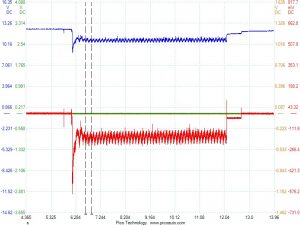
To learn more see our latest Frank Massey training courses by clicking the below link or call 01772 201597

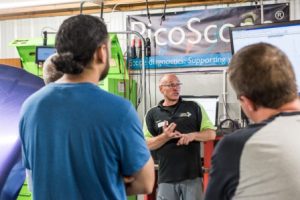
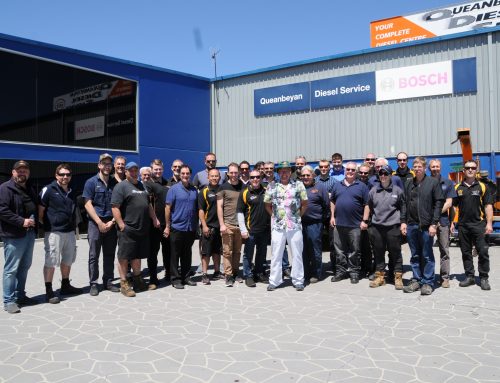
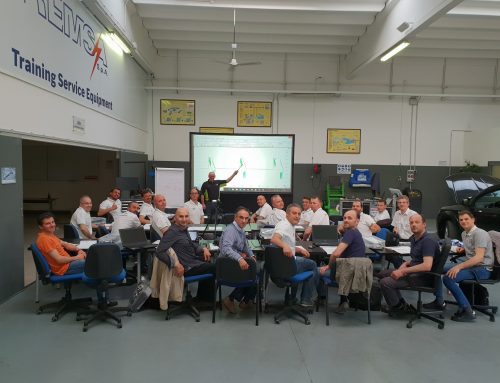
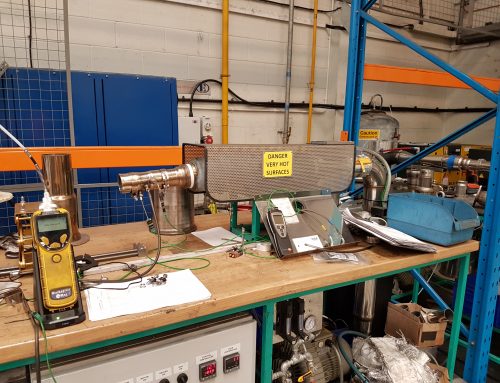

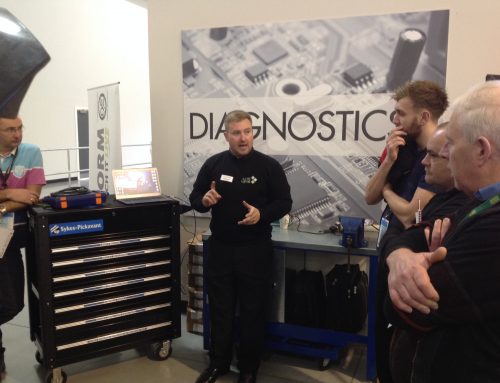
Leave A Comment